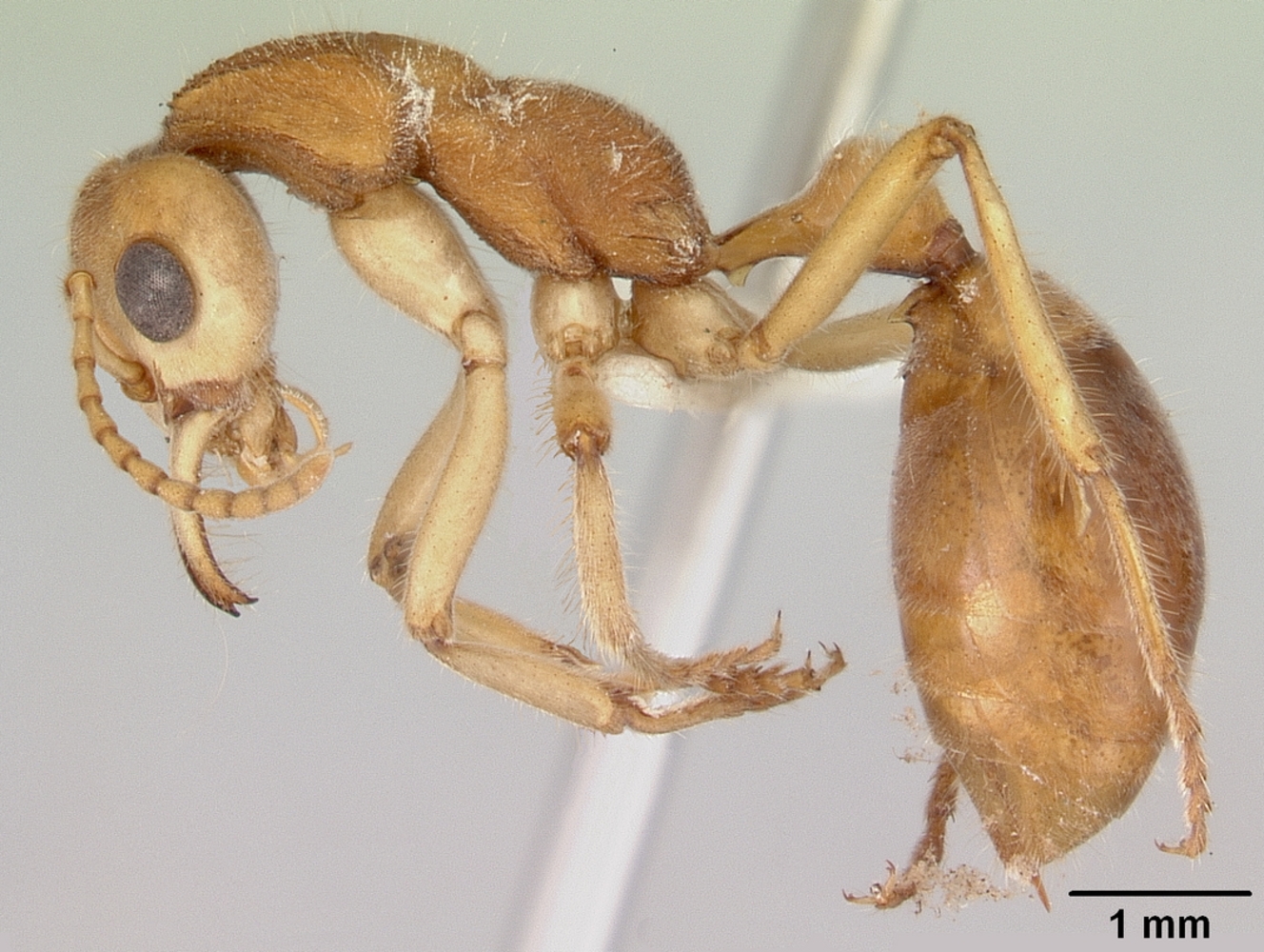Planet Earth Online - Antisocial Ants
Interview with
Planet Earth Podcast Presenter, Richard Hollingham, visited a small, hot, humid room at the University of Leeds. Inside this controlled environment he met Bill Hughes - who studies ants' social, and antisocial, behaviour - as well as some unexpectedly large insects...
Bill - These are dinosaur ants from Brazil. They're one of the largest species of ants in the world. They are about 3 ½ centimetres long. They have a pretty powerful sting on them, as you'd guess from looking at them, considerably more painful than a bee sting. They're interesting because unlike most ants which have a queen and worker class - as you would probably know - these are what we called primitively eusocial. They have an alpha female-beta female dominance hierarchy, so they're actually very, very similar to our vertebrate societies, wolf packs, meerkat packs, things like that.
Richard - So you could compare these to a much higher animal, like a wolf for example.
Bill - Absolutely. In terms of the social interactions within the societies, they're very, very similar. The beauty of them, from research, of course is that we can have multiple colonies of these ants here in this relatively small room whereas if you're trying to do the same kind of experiments with a wolf pack, you obviously couldn't.
 Richard - They do look almost prehistoric, don't they? With a long pointed abdomen, almost like a wasp, a head with these pincers at the top, and these long legs out of the side, and these long antenna as well which are moving around.
Richard - They do look almost prehistoric, don't they? With a long pointed abdomen, almost like a wasp, a head with these pincers at the top, and these long legs out of the side, and these long antenna as well which are moving around.
Bill - Ants evolved from wasps and so you tend to find that the most primitive species of ants are very wasp-like in behaviour and also in morphology.
Richard - Now these are known as social insects, but what you're looking is the fact that they're not always that social - they can be anti-social.
Bill - Yeah, that's right. When we look at a social insect colony - in fact, just as when we look at a human society, it's obviously the cooperation that's the most obvious characteristic. It seems that the society is very egalitarian. As we've started looking in more detail at social insect societies though, we find out that there's actually an awful lot of conflicts within them because individuals aren't clones of one another. They're not reproductively identical. And so, their interests different to a greater or lesser extent.
For example, in these dinosaur ants, we have an alpha female, a beta female, and so on, a dominance hierarchy - but because they are morphologically the same, there's a lot of potential for subordinate females to try and reproduce, and they do do that. They'll lay eggs. The alpha female will normally detect the egg and will police it by cannibalising it. In fact, the alpha female's particularly clever because rather than just using physical aggression to exert her dominance like in a wolf pack, she actually uses chemical cues to do it. So if she detects that a subordinate female is challenging her, she will smear than individual with the venom from her sting - she doesn't sting the subordinate - she smears it with venom and that acts as a signal which causes the other individuals in the colony to act aggressively towards that challenger, and to spreadeagle the challenger. So she's really quite clever rather than enforcing her dominance herself, she uses the other individuals in the colonies to do it.
Richard - Okay so, you've got these dinosaur ants which have been around for about 100 million years or so, but you got more recent ants in here - leafcutter ants.
Bill - Yes. So these leaf cutting ants show a much more advanced form of sociality than we see in the dinosaur ants. You can see they've got tiny, tiny workers, much larger workers, and then the queen is huge. So a larva, when it's developing, they may develop into a worker or they may develop into a queen, and theoretically, they're all meant to have an equal chance. It turned out though when we've used genetic methods to look at the kind of dynamics within them, that it is not actually equal and that individuals which are the offspring of some fathers have more chance of becoming a queen than others. So they're essentially cheating their nest mates out of the fair chance of becoming royalty and one of the obvious explanations might be that there's some form of nepotism going on because these maggot-like larvae are being reared by adult workers, maybe if the adult workers are able to recognise the larvae that they're more related to, they could preferentially care for them. Theoretically, that shouldn't occur. We've just been looking at these recognition cues which these ants have on their cuticles, and we found that actually, there is the information there to allow individuals to recognise their kin. So it's one of those examples where we had a very strong prediction from theory, but when we've actually been able to use very advanced chemical and genetic techniques in combination, it turns out that actually the information is there. So, it may be that they don't use that information - we still have to find that out - or it maybe they do and possibly that explains this form of royal cheating that we see going on in this colony.










Comments
Add a comment